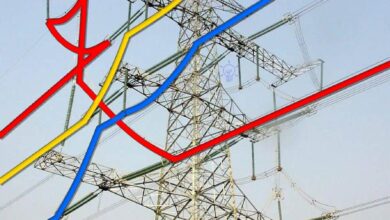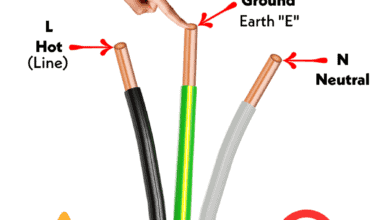Power System
-

What Does Hanging Shoes from Overhead Power Lines Mean?
What are the Reasons Behind Shoes Strung Up on Power Lines? You may have seen colorful aerial marker balls on power lines, but what does it mean when shoes are…
Read More » -
The Mini LineFly Drone Robot Saves Birds from Colliding with Power Lines
The Mini LineFly Drone-based Robot Prevents Avian Collisions with Overhead Power Lines The modern landscape of power transmission has increasingly become a battlefield between human infrastructure and natural wildlife, particularly…
Read More » -
Why Do Wind Turbines Have 3 Blades Instead of 2 or 5?
Why are Three Blades Considered Optimal for Wind Turbines, Rather than Two, Four, or More? Wind turbines have become a cornerstone of renewable energy generation, and their design has evolved…
Read More » -
Difference between Voltage Source Inverter & Current Source Inverter
What is the Difference between Voltage Source Inverter (VSI) and Current Source Inverter (CSI)? The voltage source inverter (VSI) and the current source inverter (CSI) are two different types of…
Read More » -
Difference Between Voltage Stabilizer and Voltage Regulator (AVR)
Difference Between Automatic Voltage Regulator (AVR) and Voltage Stabilizer Both voltage stabilizers and voltage regulators are used to control voltage levels. Voltage stabilizer is more focused on maintaining a stable…
Read More » -
Difference Between Shunt Capacitors and Shunt Reactors
What is the Difference Between Shunt Reactor and Shunt Capacitor? There are several devices used in an electrical power system to improve the power factor and its efficiency. A shunt…
Read More » -
Why Use VCB Circuit Breakers in HV Transmission, & Not ACB?
Why are VCB Circuit Breakers Preferred in High Voltage Transmission Systems Instead of ACB? What is an Air Circuit Breaker (ACB)? An Air Circuit Breaker (ACB) is a type of…
Read More » -
Why is the Position of Overhead Conductor Exchanged in a Transposition Tower?
Why are Overhead Conductor Positions Exchanged in a Transposition Tower? Electrical energy is transmitted in high-voltage three-phase lines without a neutral (3 conductors). Over long distances, these lines develop reactances,…
Read More » -
Why is Live Line-Washing or Cleaning Done on Energized Power Lines?
Importance of Live-Line Washing, Live-Line Maintenance or Cleaning What is Live-Line Washing? Live-line washing, also known as live-line maintenance or live-line working, is a technique used in the maintenance of…
Read More » -
Will I Get an Electric Shock If I Touch the Ground Wire?
Is It Harmful to Touch the Grounding Wire? What is the Ground Wire? A ground wire, also known as an earth wire or grounding wire, is a wire in an…
Read More »








